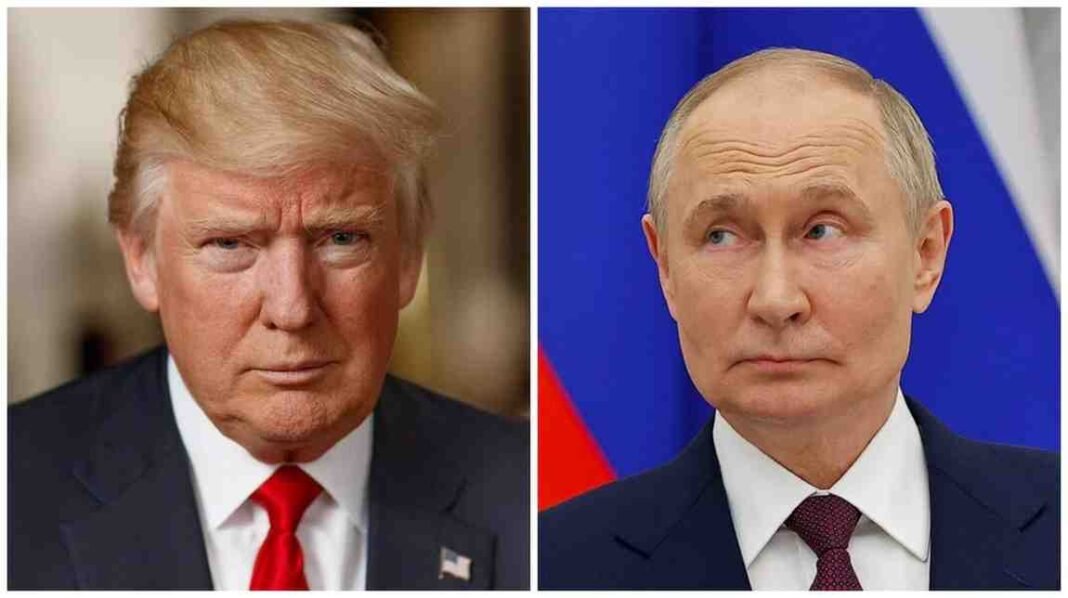Trump Pushes for Economic Pressure on Moscow
US President Donald Trump has stepped up his efforts to curb Russia’s ability to sustain its war in Ukraine by lobbying the European Union to impose tariffs of up to 100% on imports from China and India. According to a source familiar with the discussions, Trump made the request during a high-level meeting between US and EU officials on Tuesday. The talks centered on exploring new ways to intensify economic pressure on Moscow following a series of deadly Russian strikes on Ukrainian cities.
Trump, who campaigned on a promise to bring the conflict to a swift end, has so far struggled to broker any tangible progress toward peace. The Kremlin’s recent missile and drone assaults on Kyiv and the Donbas region have underlined Russia’s determination to maintain its offensive despite international sanctions. By targeting China and India—two of Russia’s most significant buyers of oil—Trump hopes to undermine the financial pipeline that has kept Moscow’s economy afloat.
A Shift in European Strategy?
If Brussels were to accept Trump’s proposal, it would mark a dramatic departure from its current strategy. Until now, the EU has relied on direct sanctions aimed at Russian banks, energy firms, and defense companies rather than levies on third countries. Although European leaders have vowed to end their reliance on Russian gas, around 19% of the bloc’s natural gas imports still originate from Russia, leaving member states cautious about triggering further disruptions.
The Financial Times first reported Trump’s tariff proposal, which comes at a time when Washington has already tightened its own measures. Last month, the US introduced a 50% tariff on Indian goods, part of which included a 25% penalty linked to New Delhi’s energy trade with Moscow. The EU has so far resisted such broad trade restrictions, fearing a backlash from both China and India, whose markets are crucial to European businesses.
Russia Intensifies Strikes on Ukraine
Trump’s lobbying effort coincides with one of the heaviest bombardments Ukraine has endured since the start of the war. Over the weekend, Russian forces struck Ukraine’s main government complex in Kyiv with a missile, a move seen as both a symbolic escalation and a devastating blow to civilian morale.
Ukrainian authorities reported that Russian forces launched at least 810 drones and 13 missiles in a coordinated assault across the country. In the eastern Donbas region, a glide bomb attack on Tuesday killed more than 20 civilians who had gathered to collect their pensions. These strikes underscored Russia’s continued capacity for destruction, despite Western sanctions intended to limit its resources.
Trump responded by expressing frustration with the situation, reiterating that harsher sanctions were on the table. However, critics noted that the administration has repeatedly set deadlines for tougher measures without following through, giving Moscow space to escalate its attacks.
Trump’s Balancing Act with India
While pressing Europe to penalize India for its ties with Russia, Trump has simultaneously sought to repair Washington’s bilateral relationship with New Delhi. Addressing reporters, he confirmed that negotiations with India to resolve ongoing trade disputes were continuing and described them as “productive.” He added that he expected to speak with Indian Prime Minister Narendra Modi in the coming weeks to push for what he called a “successful conclusion.”
In response, Modi echoed Trump’s optimism, calling the United States and India “close friends and natural partners.” He added that both governments were working to finalize agreements at the earliest opportunity. This conciliatory tone suggested a thaw in relations after talks collapsed earlier this year, sparking tensions between the two countries.
Last week, Trump emphasized that the long-standing partnership between the two democracies remained strong, despite “moments on occasion” where trade disagreements caused friction. Analysts see Trump’s simultaneous tariff threats and outreach as part of a broader strategy to keep India engaged while still tightening the screws on Russia.
What Lies Ahead
The EU has not yet formally responded to Trump’s call for 100% tariffs on China and India. European diplomats remain divided on whether such measures would be effective or risk undermining their own economies. Still, Trump’s push highlights Washington’s determination to align global trade policy more closely with efforts to cut off Russia’s war financing.
As the conflict in Ukraine intensifies, the pressure on Western allies to adopt bolder measures continues to mount. Whether Europe joins the US in targeting China and India with sweeping tariffs could determine the next phase of the economic front in the war.








